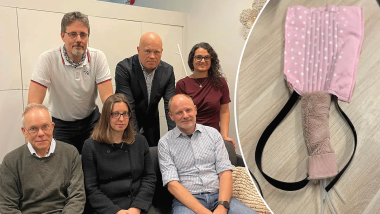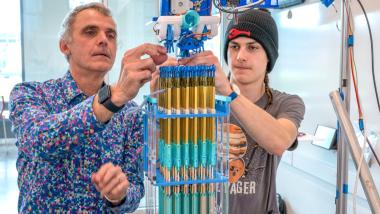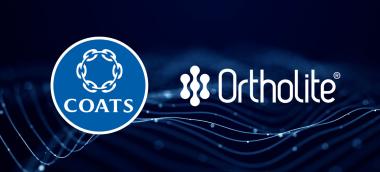New research project: Textile touch that relieves long-term pain
Can textiles that touch the skin relieve long-term pain? This is the core question of the large interdisciplinary research project Touch away the pain, where the University of Borås is one of the central actors. The project, which will run for six years, is part of the Swedish Research Council's investment in interdisciplinary research environments.
Nils-Krister Persson, Associate Professor and Senior Lecturer at the Swedish School of Textiles, University of Borås, who is responsible for the textile development in the project, said, “We want to find out what actually happens in the body when you activate the sense of touch. Is it possible to create artificial touch that people actually want to experience, to reduce long-term pain? Is it possible to replicate touch from another person?”
Textile technology meets neurophysiology
The project brings together researchers from the University of Borås, Linköping University, and Region Östergötland. Together, they investigate how artificial touch, created with the help of textile actuators, can affect the body's pain signals.
“We have a long history of developing textiles that actuate, what we sometimes call textile muscles. They can thus exert force on their surroundings or change their shape. Now we are looking at how this technology can be applied in pain treatment,” said Nils-Krister Persson.
Håkan Olausson, Professor of Clinical Neurophysiology at Linköping University Hospital, who is participating in the project, commented, “We have discovered special receptors in the skin that convey pleasure when touched. They can lower stress levels in the nervous system, perhaps through mechanisms involving oxytocin. These are the ones we are trying to activate using textiles.
What happens in the body when touched?
His research colleague Sarah McIntyre, Associate Senior Lecturer and touch researcher at Linköping University Hospital, explains that touch and pain are not separate systems in the body; rather, they interact.
“The nervous system processes signals from both pain and touch at the same time, and they affect each other. We're trying to understand how it works, and how we can use that knowledge to design wearable aids that relieve long-term pain,” said Sarah McIntyre. “We will start by understanding the patient’s needs. What do they want help with? What feels good? This is a good starting point for the whole project.”
The technology behind the textiles
Edwin Jager, Professor of Sensor and Actuator Systems at Linköping University, is working on the technical development of the project.
“We are developing two technologies in parallel, pneumatic actuators and textile actuators. Textiles are particularly promising because they can be integrated into clothes and used discreetly in everyday life,” said Edwin Jager.
“Imagine sitting in a meeting, and at the touch of a button or via an app you activate a textile that gives you pain relief, without anyone noticing. That's where we want to go,” he explained.
Clinical application in focus
Nazdar Ghafouri, Senior Consultant and pain researcher at Linköping University Hospital, is responsible for the clinical part of the project.
“We will start by testing on people without pain and then move on to patients. There is already a lot of research that shows that touch can relieve pain, but we want to find out what kind of touch, for how long, and where it works best,” she said.
She continued, “This is really interdisciplinary and we are constantly learning from each other. This is my first time at the Swedish School of Textiles, and I find it to be a fantastic environment characterised by creativity, humanism, and concern for sustainability. I believe that we in healthcare have a lot to learn from the creative approach in design and technology, especially when it comes to problem solving and daring to think outside the traditional framework.”
Next steps, from lab to patients
The project is still in its start-up phase, but the researchers plan to start testing prototypes soon. First, tests are carried out in a lab environment, then in clinical studies.
“We've been working for about six months and are still in the start-up phase. But there are already about fifteen people involved, and more are coming. It is a large and exciting project,” concluded Nils-Krister Persson.
Swedish School of Textiles, University of Borås













